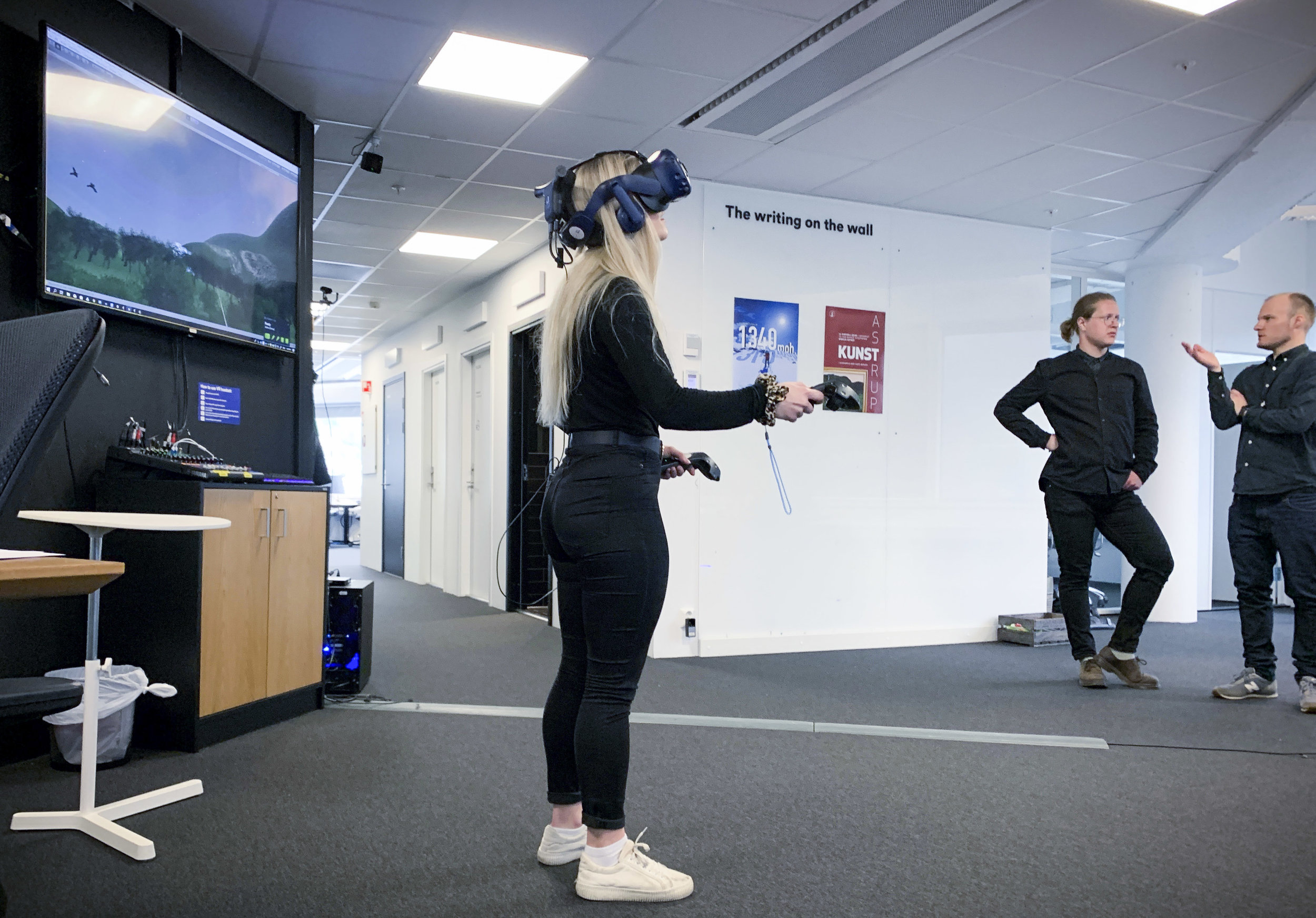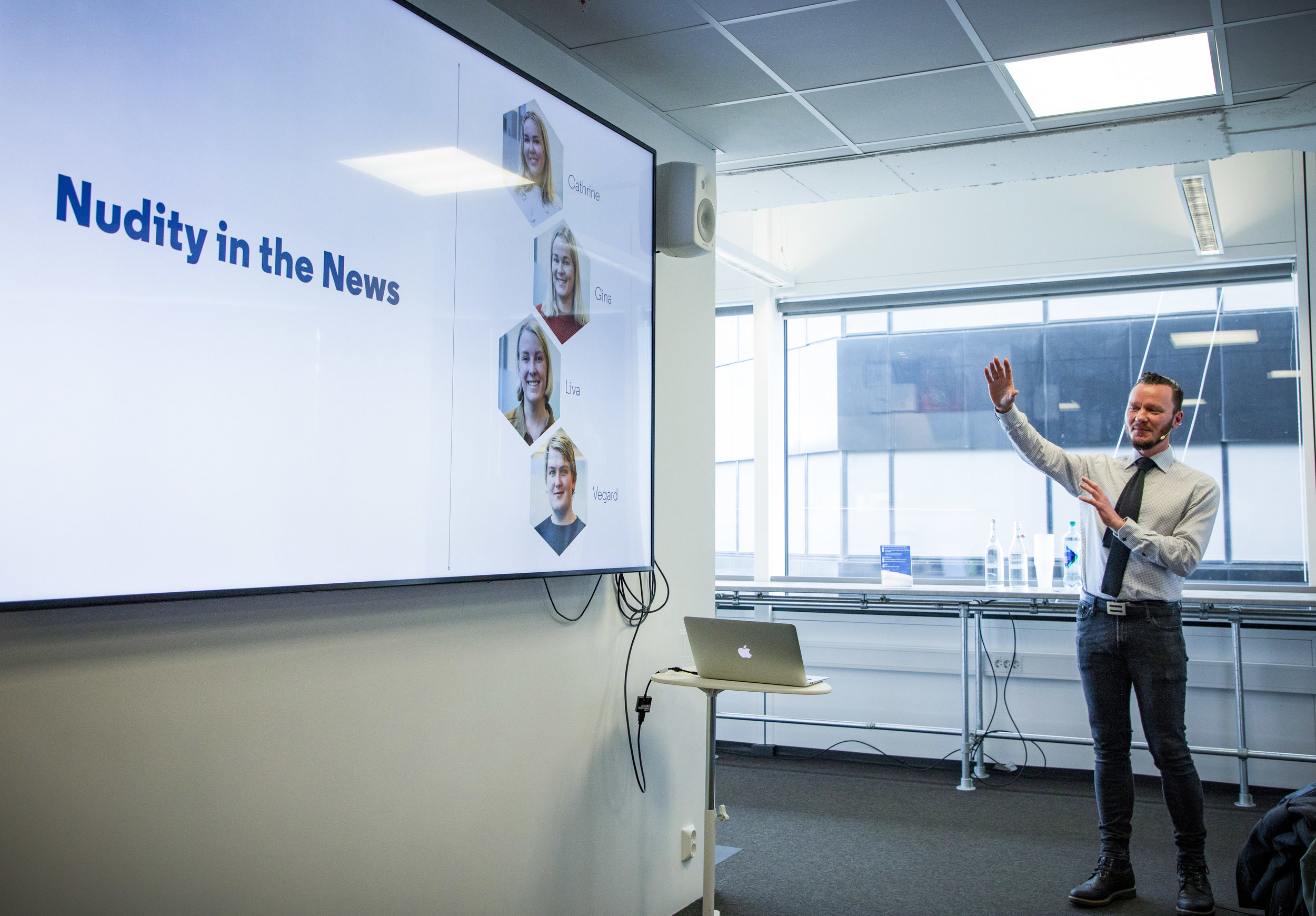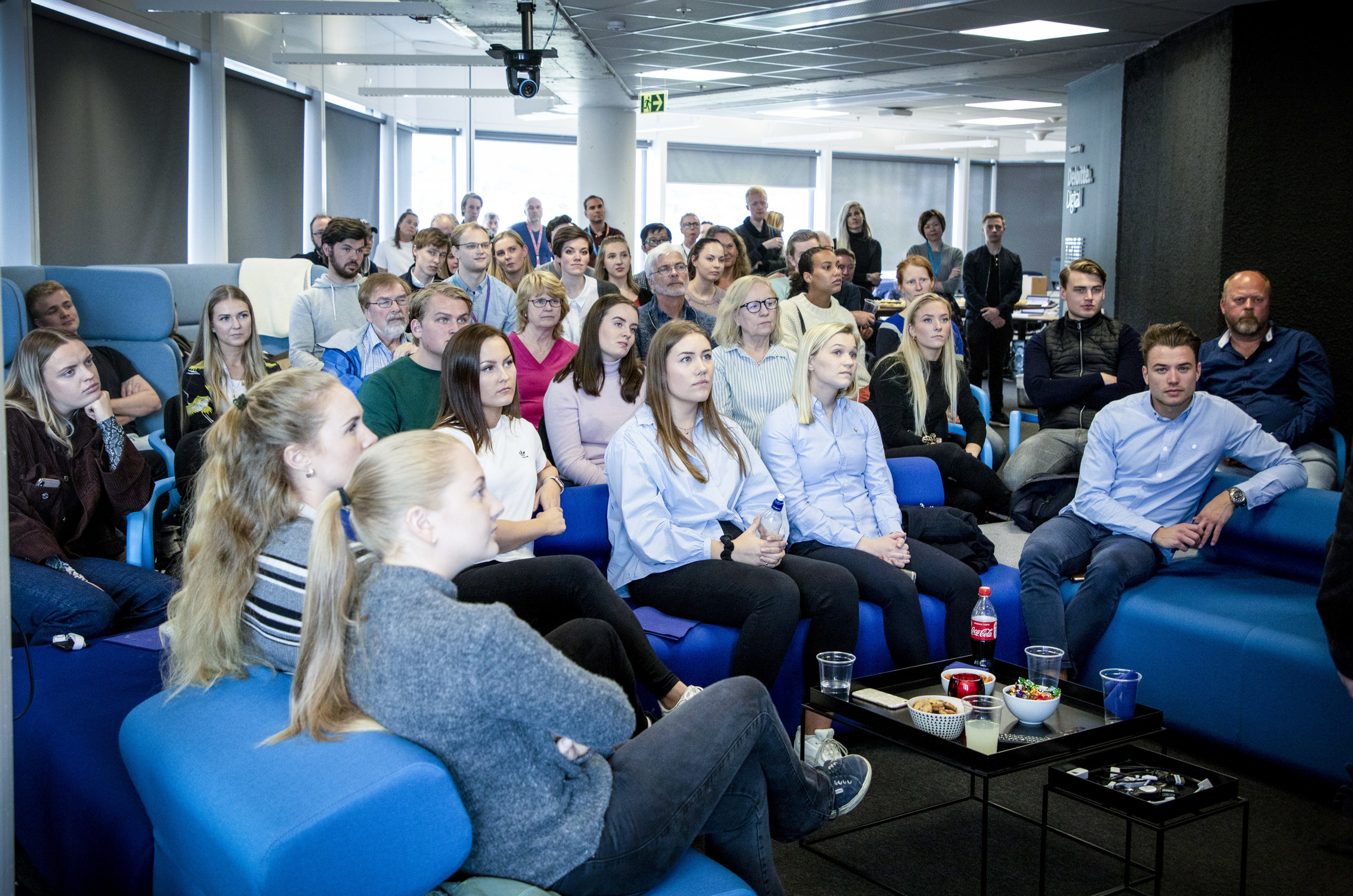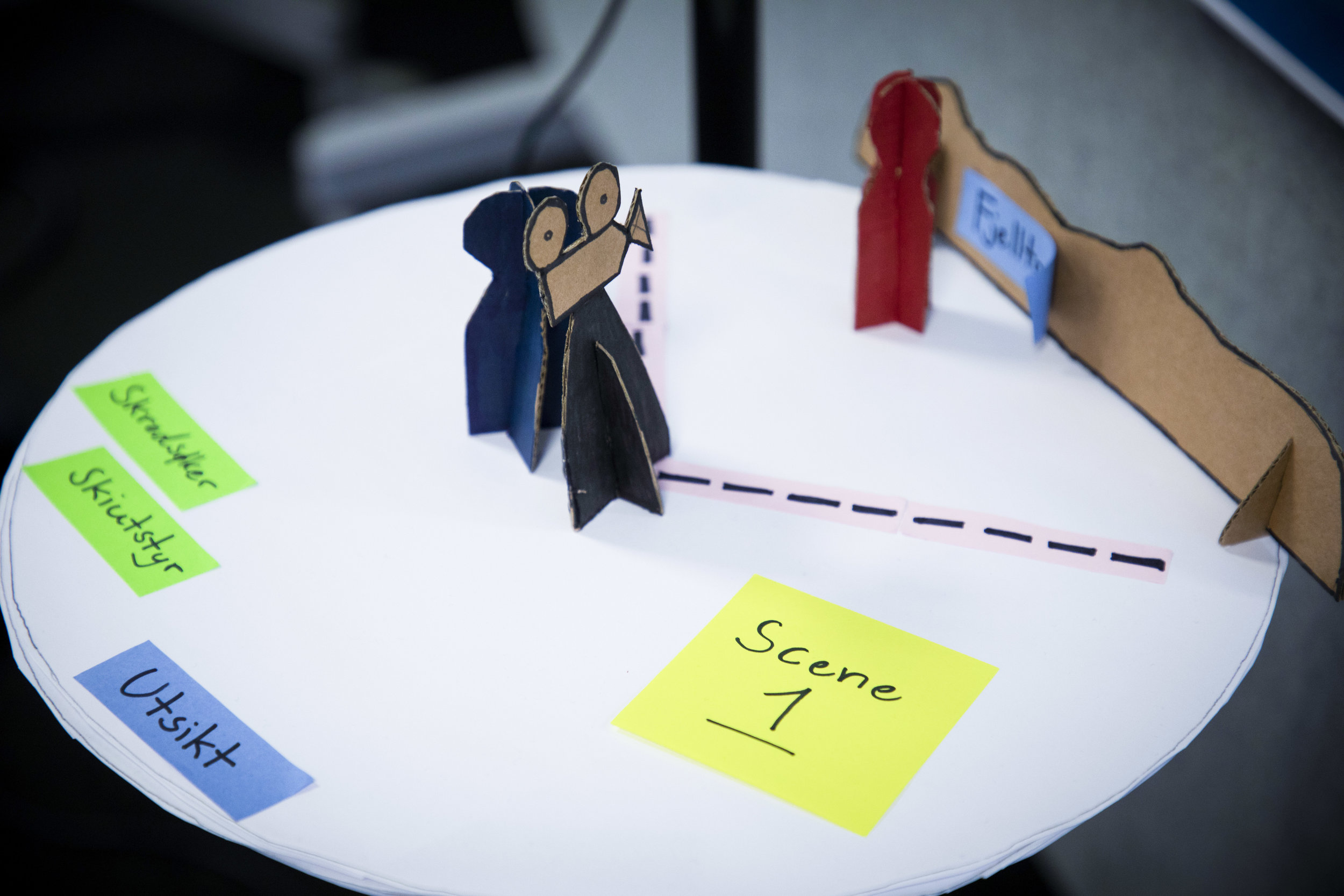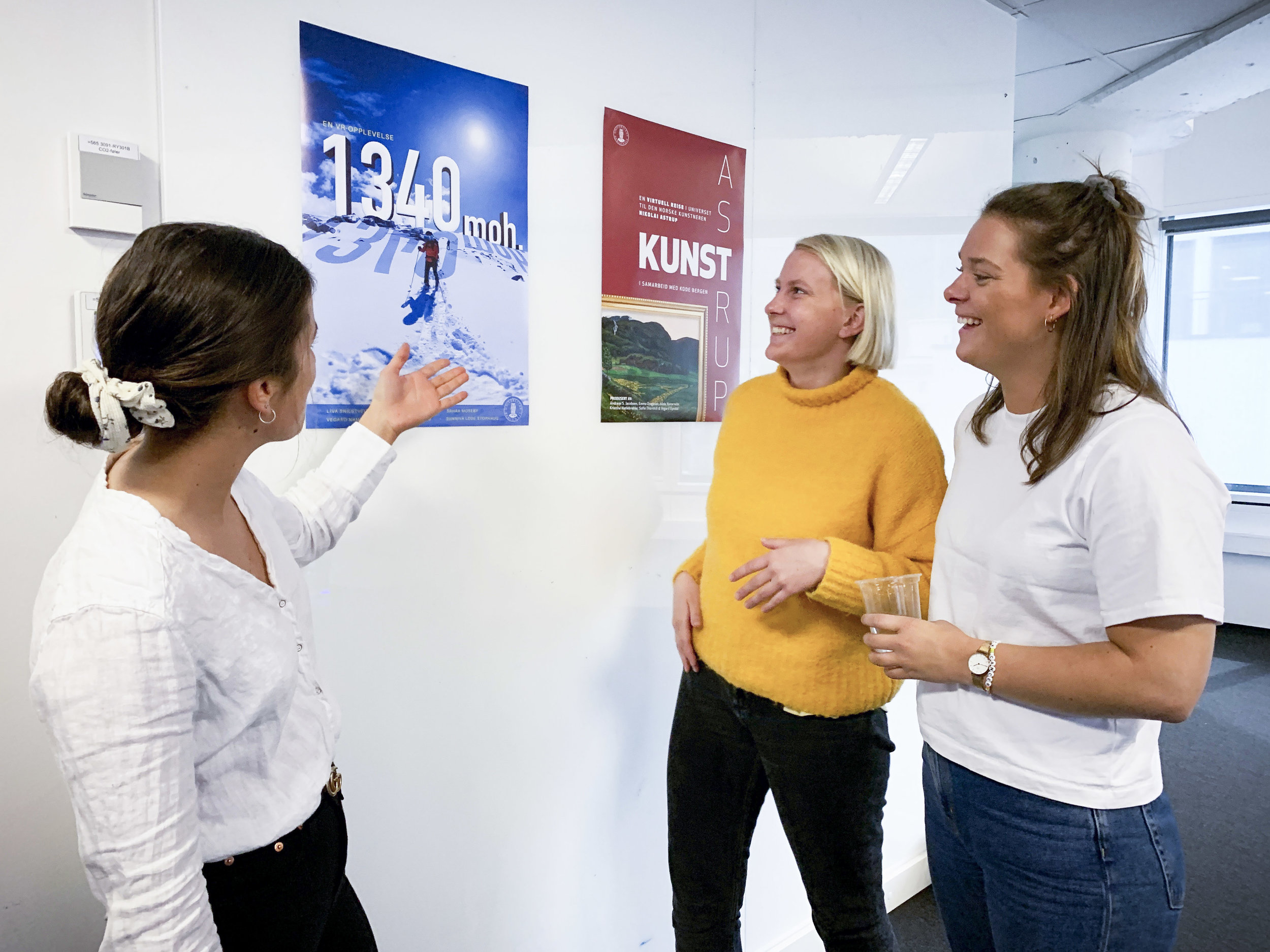Students at the Vanguard of Innovation
During the "Student Show & Tell: Explorations of new technology in the media" the audience were presented with the students' innovative use of new technology for media purposes.
It was all done in the new course "MIX202 Design for media use». It is part of the bachelor program in Media and Interaction Design at the University of Bergen in Media City Bergen.
Innovation pedagogy
The course has been guided by the principles of "innovation pedagogy" and the core principle is to give students access to novel technologies that we haven't explored properly before. The students become the innovators, while teachers support them.
Vismedia has supported this approach for many years, with a focus on drones, 3D-modelling, mobile VR and augmented reality, as well as eye-tracking and stress wrist bands.
These are tools that the teaching staff doesn't know much about yet. In order to explore these tools, teachers must push the students in front of us. Young people are the true explorers of new technological terrain, and this is what innovation pedagogy is all about.
Eye-tracking
Can the use of eye-tracking contribute with valuable insights for the media business? In part one teacher Frank Wisnes presented six student evaluations of visual design in journalism, based on eye-tracking and stress measurements.
Student groups have made evaluations of journalistic designs in VG, VG SnapChat, Peil (VG), Aftenposten, Bergens Tidende and NRK using state-of-the art biometric equipment. Credit are also due to teachers Fredrik Jensen and Johanne Ågotnes who were instrumental in the technical training and evaluation with equipment from the biometrics company Noldus IT.
Augmented reality
Is there a future for storytelling in VR and AR? In part two teacher and PhD student Joakim Vindenes presented immersive augmented reality stories told with 360 video, spherical sound design and interactive functions made for HTC Vive.
We then moved into the lab for an interactive session where the student groups demonstrated their different stories. Audience members could try the stories for themselves, and talked to students and observed others experiencing the stories.
Credit is due to teachers Zulfikar Fahmy, Joakim Vindenes and Audun Klyve Gulbrandsen. They were instrumental in the technical training in HTC Vive, storyboarding and sound design.
Students
Herman Grønsund Andreassen
Ole-Morten Berentsen
Emma Opheim Drageset
Henriette Eide
Emma Ingeborg Tveit Erlandsen
Lena Moen Færøvik
Synne Grindheim
Kristine Hatlebrekke
Cathrine Heienberg
Liva Snilstveit Hoem
Andreas Skjælø Jacobsen
Tomine Koteng Monsen
Sahra Sousa Moseby
Vegard Namtvedt
Hilde Haugland Navarsete
Anita Norheim
Vegard Opedal
Emilie Lundgård Samuelsen
Gina Møller Sandtorv
Sunniva Lode Storhaug
Oscar Åstvedt Strand
Sofie Thornhill
Rebecca Vatnebryn
Halvard Alvheim Vegum


